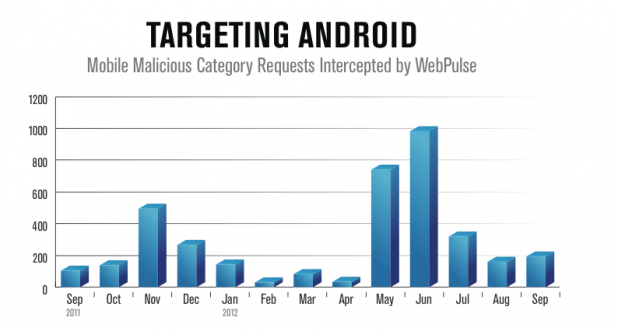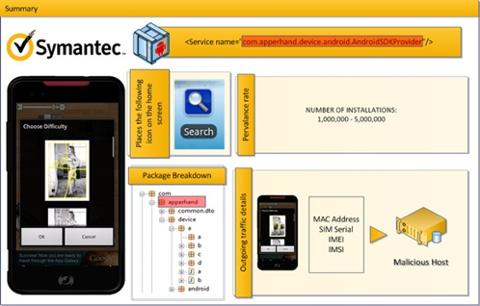Android Malware Attacks on the Rise
With great power comes great vulnerability. Google Android dominates the smartphone market, and it’s a solid contender in the realm of tablet operating systems. According to a recent report from Strategy Analytics, Android and Apple’s iOS ran on 92 percent of smartphones shipped in the fourth quarter of 2012—forcing Microsoft’s Windows Phone and the new BlackBerry 10 to fight over the remaining scraps of market share. And with smartphone sales seemingly on the rise for the foreseeable future—some 700.1 million units shipped in 2012, a huge jump over the previous year—it’s likely that Android’s influence won’t fade anytime soon. But for malware creators, that popularity also makes Android a huge and tempting target. “In 2012, mobile threats were a relatively small but growing percentage of overall traffic,” reads the introduction to a new report by Blue Coat, which provides Web security software. Malicious apps, spam, phishing, and scams were all a part of the threat equation. While malware remained a tiny element within that equation, the Blue Coat analysts believe it will become more present in 2013 “as adoption of mobile devices continues to grow rapidly and businesses increasingly provide access to corporate assets.” Between July and September 2012, Blue Coat Security Labs saw a 600 percent increase in Android malware over the same period in 2011. “Android devices offer a unique case study on the rise of mobile malware,” the report added. “The unregulated app market and diversity of Android-based devices ensures that cybercriminals will find greater success targeting these platforms.” Blocked malware included an Android root exploit and a collection of rogue Android software. Blue Coat’s best practices for negating these threats include blocking “all content to mobile and desktop devices from dangerous categories, including pornography, phishing and spam.” It also recommends blocking “executable content from un-rated domains and categories that typically host malware, such as Dynamic DNS hosts.” Blue Coat isn’t the only observer of mobile malfeasance: Kindsight, an Alcatel-Lucent subsidiary, is also reporting that mobile network infections are on the rise. Late last year, McAfee predicted that mobile malware, along with hacking-as-a-service and large-scale cyber-attacks, would dominate the IT threat environment in 2013. “Cybercriminals and hacktivists will strengthen and evolve the techniques and tools they use to assault our privacy, bank accounts, mobile devices, businesses, organizations and homes,” Vincent Weafer, senior vice president of McAfee Labs, wrote in a statement at the time. It seems as if that future’s arriving. Image: Blue Coat


